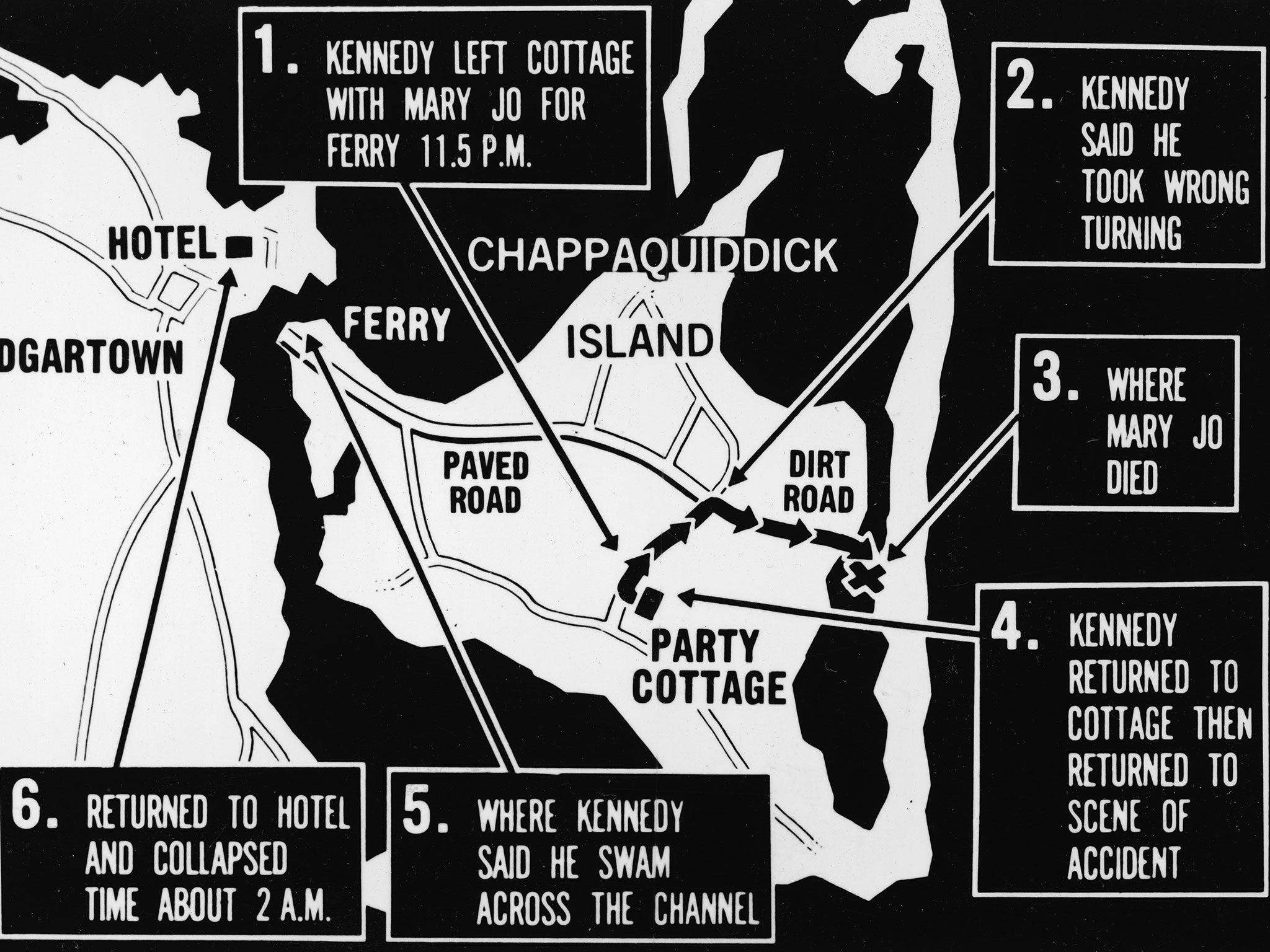Chappaquiddick 50 years on: The car crash that forever tarnished Ted Kennedy
Accident in affluent Martha’s Vineyard may have changed the course of US history

Your support helps us to tell the story
From reproductive rights to climate change to Big Tech, The Independent is on the ground when the story is developing. Whether it's investigating the financials of Elon Musk's pro-Trump PAC or producing our latest documentary, 'The A Word', which shines a light on the American women fighting for reproductive rights, we know how important it is to parse out the facts from the messaging.
At such a critical moment in US history, we need reporters on the ground. Your donation allows us to keep sending journalists to speak to both sides of the story.
The Independent is trusted by Americans across the entire political spectrum. And unlike many other quality news outlets, we choose not to lock Americans out of our reporting and analysis with paywalls. We believe quality journalism should be available to everyone, paid for by those who can afford it.
Your support makes all the difference.He was the handsome young senator from an American political dynasty, widely tipped to win the White House.
Heavily favoured to win the Democratic nomination for the presidency, Ted Kennedy looked set to square-off against Republican incumbent Richard Nixon at the 1972 election.
But his hopes of emulating his older brother John F Kennedy were irreparably damaged 50 years ago.
A car crash in Chappaquiddick would claim the life of a young female political campaigner and forever tarnish his reputation.
Here The Independent examines the incident.
What happened?
On 18 July 1969, Kennedy, aged 37 at the time, had been attending a party on Chappaquiddick Island, part of the affluent Massachusetts resort Martha’s Vineyard.
The Massachusetts senator had left the party with Mary Jo Kopechne, a 28-year-old political campaign specialist. He later testified at inquest that she had asked him to drop her back at a hotel.
At around midnight, Kennedy’s car swerved off a narrow, unlit bridge with no guardrails and plummeted into the Poucha Pond.
He escaped the sinking saloon. Kopechne did not.

Kennedy claimed he made several attempts to save her before giving up and returning to the party on foot.
Later, he said he returned with two friends for another rescue attempt but that was foiled by the strong tide.
Ten hours passed before the senator reported the incident to the police, minutes before Kopechne’s body was recovered from the vehicle.
John Farrar, the diver who recovered the corpse, said he believed she died from suffocation rather than drowning, trapped potentially for hours in a small air pocket inside the car.
What action was taken?
Just a week after the crash on 25 July, Kennedy pleaded guilty to a charge of leaving the scene of an accident and received a suspended two-month prison sentence, the statutory minimum for the offence.
His attorneys had argued he should be granted a lenient sentence by the judge, due to his age, character and prior reputation.
That night the senator made a speech in which he insisted he had not been driving under the influence of alcohol at the time of the crash, as well as denying “widely circulated suspicions of immoral conduct” surrounding his relationship with Kopechne.
He described his decision not to immediately report the incident to the police as “indefensible”, stating that he was overcome by a “jumble of emotions – grief, fear, doubt, exhaustion, panic, confusion, and shock.”
An inquest would later conclude there was “probable cause to believe” Kennedy had been operating the vehicle negligently.
A tarnished figure
Kennedy’s inaction caused significant damage to his reputation.
Prior to the incident, he was popular throughout the country and was seen by many to follow in the footsteps of his brothers, John and Robert, by running for the presidency.
Five years before the crash, Kennedy had been re-elected to the senate with 75 per cent of the vote. In an election 15 months after the crash, his margin of victory was reduced to 64 per cent.
He did not run in the 1972 or 1976 presidential race, a decision likely taken as a result of Kopechne’s death.

When Kennedy decided to run in 1980, renewed interest in the Chappaquiddick incident hindered his campaign.
His Democratic primary opponent, then-president Jimmy Carter, frequently called into question Kennedy’s character by alluding to the events on the resort island.
After a failed campaign, Kennedy abandoned his White House dreams. He went on to serve in the Senate for another four decades until his death.
In Kennedy’s posthumous memoir, True Compass, he called the incident a “horrible tragedy that haunts me every day of life”.
The Edward M Kennedy Institute for the United States Senate, a body created in honour of his 47 years of service in the Senate, has no plans to commemorate the incident and the death of Kopechne.
Join our commenting forum
Join thought-provoking conversations, follow other Independent readers and see their replies
Comments